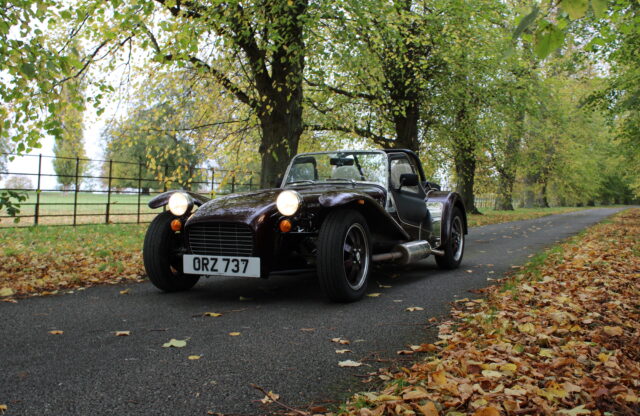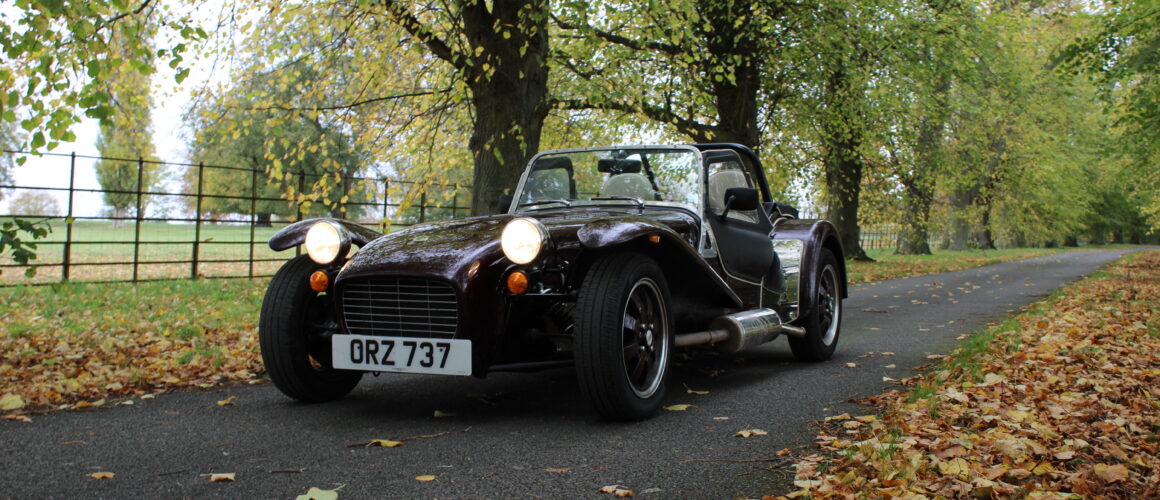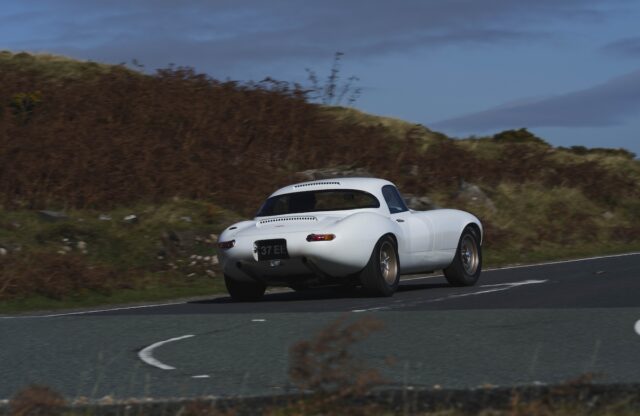At the risk of sounding like a jaded journalist, it was with a sense of slight trepidation that I traded the keys to my quiet, civilised Audi TT for those of a back-to-basics Caterham Super Seven 600. In my defence, I was bidding goodbye to heated leather seats in late October – a time of year that, in the UK at least, is often rather wet and chilly. Happily, I brought my coat.
My apprehension only grew as Caterham’s affable PR man provided a tellingly brief rundown of the diminutive car’s controls and features. “Be careful folding the roof into the boot,” he cautioned. “You don’t want a crease down the middle of your rear window.
Laughing, he continued: “It’s held with poppers, and it gets easier to put up once you’ve done it a few times in the rain. Pull this plunger for heat, flick these toggle switches for lights and indicators, and hit the red button to start it up.” And that was that.
With the roof up, some gymnastics were required to fold my six-foot frame into the cocoon-snug cockpit. Once ensconced, I was immediately transported back in time. The gorgeous three-spoke Mota-Lita steering wheel was only marginally wider than the centre of my Audi’s steering wheel, and my view ahead was dominated by the olde-worlde flared front arches, chrome-finished headlight housings and Smiths gauges.
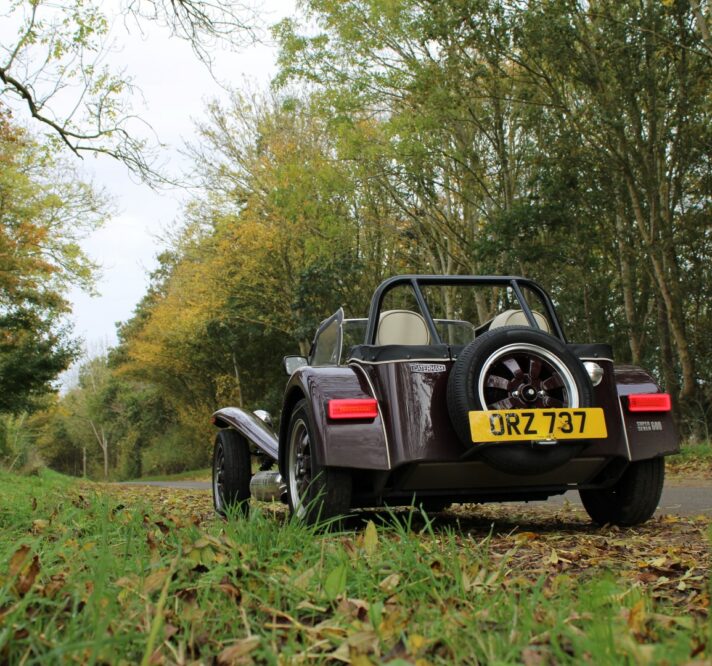
These reborn Super Sevens are perhaps as close as you can get to buying a ‘new’ car from half a century ago
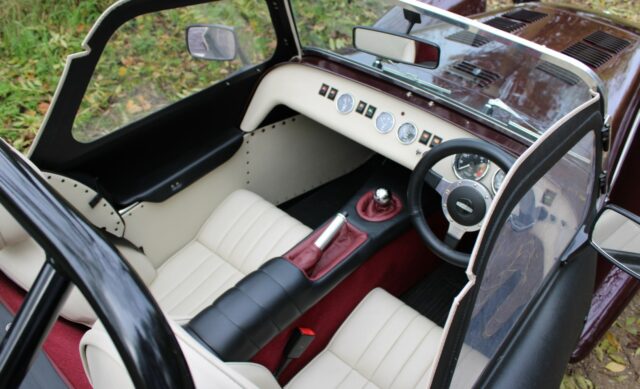
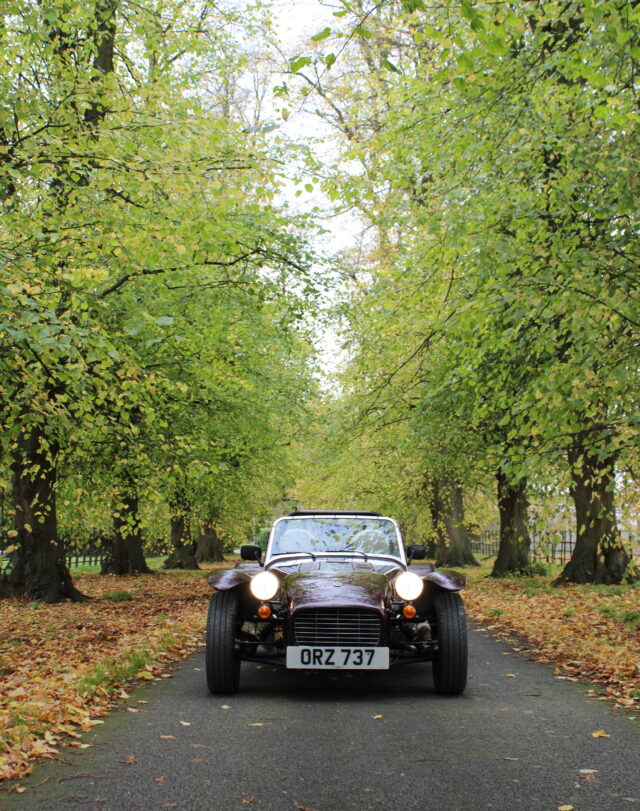
With a final squeeze into place and the bright red starter button primed, it was time to face the near three-hour drive north from Caterham’s Dartford headquarters to my home in Nottingham. Ironically, the starter button is probably the closest thing to modernity the Caterham’s interior offers, but even that seems to have been pilfered from a 1980s Pac-Man cabinet.
While we’re on the topic of nostalgia, I’ll take the opportunity to explain what exactly this car is – and, perhaps, who it is for. The Super Seven 600 and its larger sibling, the 2000, are Heritage models launched in 2023 to celebrate Caterham’s 50th anniversary. They pay homage to the Super Sevens of the 1970s and 1980s, which were gentle evolutions of Colin Chapman’s Lotus Seven, launched all the way back in 1957.
In essence, these reborn Super Sevens are perhaps as close as you can get to buying a ‘new’ car from half a century ago – perfect for Caterham customers who prefer to spend Sundays embarking on a spirited jaunt to the public house rather than tearing around their local race circuit, harnessed into a Tillett bucket seat. Consequently, the cabin is more luxurious than a typical Seven’s. Burgundy carpet and supple Birch White leather are found on everything from the transmission tunnel to the dashboard and seats.
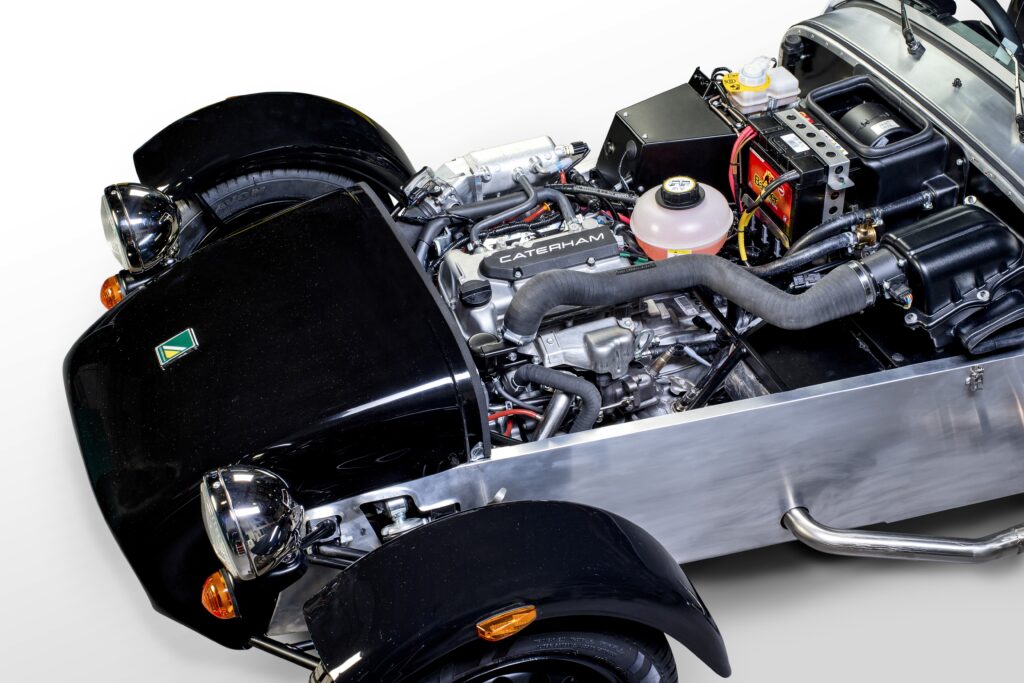
In spite of all the period charm, the 600 isn’t a total automotive luddite. Sitting within its narrow, coffin-like engine bay is a Suzuki-sourced 660cc turbocharged three-cylinder engine. Despite benefitting from the modern witchcraft of forced induction, it sends a period-correct 84bhp and 86lb ft of torque to the skinny rear tyres via a five-speed manual transmission. That might not sound particularly impressive in today’s era of 400bhp hot hatches, but with a kerbweight of just 460kg, the car will reach 0-62mph in a smidge under seven seconds and hit a (slightly terrifying) top speed of 105mph.
Back to my maiden voyage. After hours spent cocooned in the comfort of a modern car, it took only a few metres in the 600 to realise that this was an entirely different machine. So different, in fact, that it felt more like an alternative form of transport than a nostalgic throwback.
Unsurprisingly, as I discovered, the most obvious difference is one of scale; even city cars pulling up alongside seem vast, while SUVs and lorries resemble towering leviathans as you sit lower than their wheelarches. Your perspective of the road itself changes, too. A single lane now feels luxuriously wide and commodious – you can slip through gaps in queuing traffic that would be too narrow for anything other than a motorcycle.
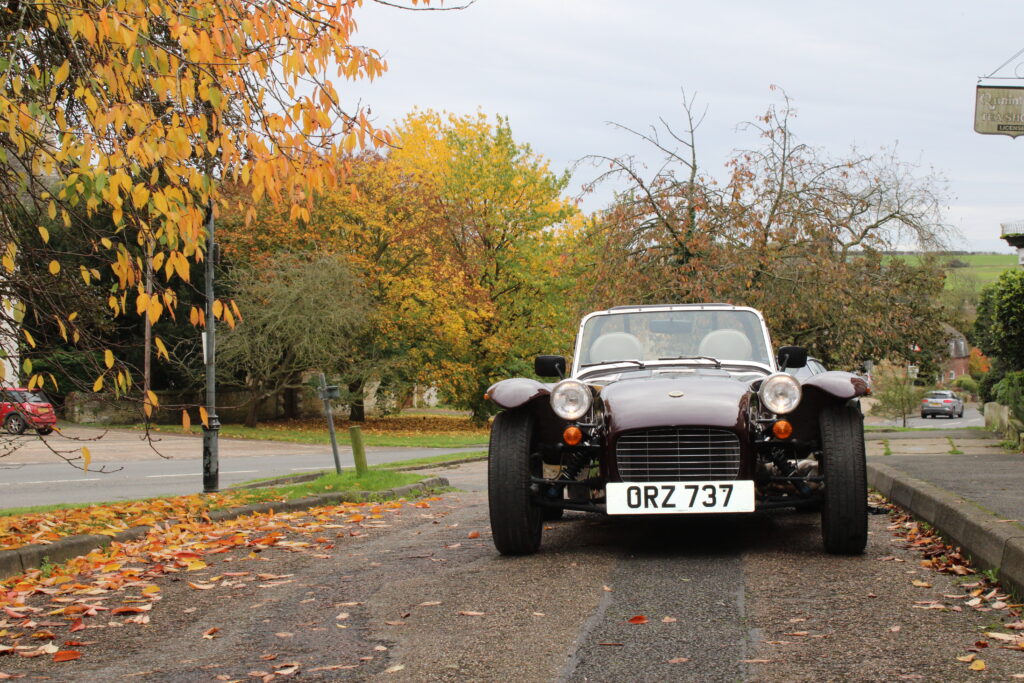
This, of course, also comes with its drawbacks. Predictably, there’s a pervading sense of vulnerability, as you’re all too aware that only a paper-thin sheet of metal is preventing you from being rotisseried by an aloof SUV driver’s wandering wheels. Best to keep the headlights on.
The next thing you notice is how incredibly direct and the controls feel. The unassisted steering is phenomenally responsive. I loathe to use the word ‘telepathic’ – clichés are frowned upon in this line of work – but there really is no better way to put it. The gearchange, meanwhile, is short and direct, although a little on the heavy side. It reminds me of the Honda S2000 ‘box – which is a big compliment in my book – but requires more muscle to slot each ratio home.
Perhaps the biggest surprise, however, is the 660cc engine. The performance feels strong, and its power-to-weight ratio of 182bhp per tonne is on par with that of a 1998 Porsche 911 Carrera 2. What’s truly unexpected, though, is the sound it makes. The rasp of the three-cylinder engine doesn’t seem particularly out of place, but it’s the turbocharger’s symphony of whistles, chirps and flutters that are both discordant and hilarious – especially when fellow motorists glance over, expecting to see something more akin to a MkIV Supra.
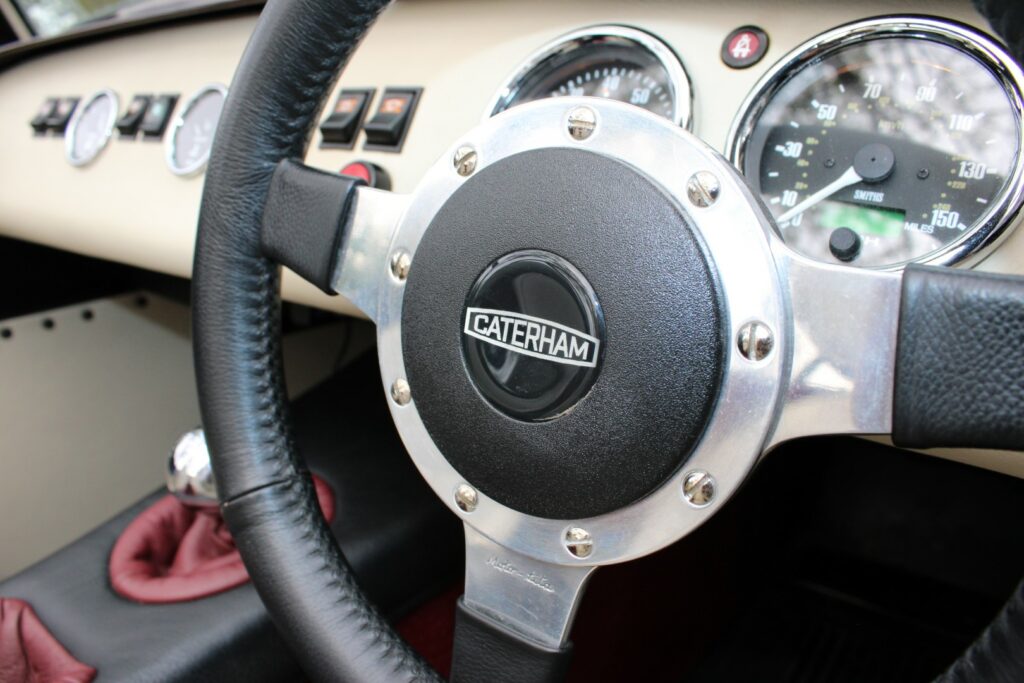
Such novelties masked much of the inconvenience and discomfort created by that three-hour motorway slog in a Caterham. It was only after reaching my destination that I realised just how tired I was, thanks to the cramped cockpit and relentless thrum of the engine at 4000rpm. The journey also served as a lesson in footwear, because only the narrowest of shoes left enough room for my size 11s to operate the pedals without issue.
Happily, however, I found myself feeling excited at the prospect of getting back into the car despite its compromises; what you give away in refinement and practicality is more than made up for by the sheer level of engagement and sense of adventure each and every journey provides.
On my first trip back from Magneto’s Northamptonshire office, I took a detour from my usual, uninspiring route dominated by stretches of the A14, A1, and A46. Instead, I sought out winding B-roads to let the car stretch its legs. Unsurprisingly, it’s in places such as these that the 600 truly comes alive.

While the ultra-short gearing is tiresome on the motorway, it’s a joy on fast, sweeping roads, inviting you to row through the tactile transmission and savour the car’s characterful soundtrack. Combined with its lightness and modest power output, the 600 delivers a thrilling sense of speed despite the numbers on the speedo. The responsive pedal box is ideally positioned for heel-and-toe downshifts, instilling confidence to lean on the brakes into corners, regardless of the absence of ABS.
The only real fly in the ointment is the traditional de Dion rear suspension arrangement. Sitting almost directly above the rear axle, you feel its every move, but it’s too bouncy for a typical B-road, sometimes unsettlingly so. Combine this with some tramlining through the steering and you start to believe that you’re only one misplaced crest away from the car shimmying into a verge. However, on the smooth asphalt of a race circuit, this probably wouldn’t be as much of an issue.
Even so, it took only one such B-road blast to reveal that the 600 was one of the most engaging cars I’d ever driven. Bizarrely, the closest thing to this softer, more luxurious Caterham is probably a Morgan Super 3, which itself is an historic car reborn for the 21st century. However, no other model quite embodies Chapman’s ‘simplify, then add lightness’ mantra as purely as the Seven.
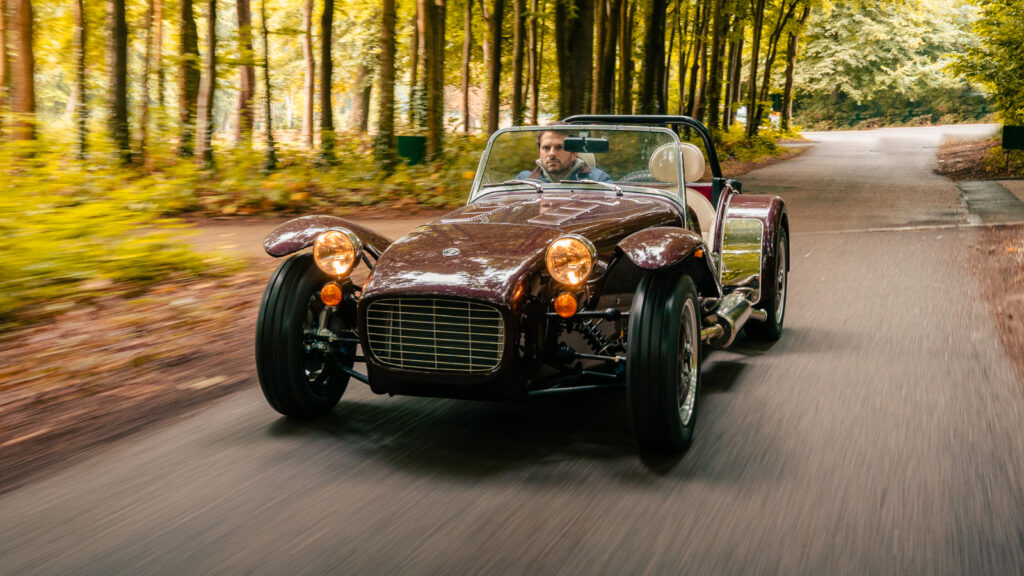
This point really hit home when, after a week of using the Caterham for everything from short shopping trips to long commutes, I handed back the keys. Firstly, it’s amazing how quickly you adapt to the car’s compromises; I was surprisingly unphased by the lack of speakers, cup-holders or cruise control, and I found the glove-like cockpit more comfortable than I expected it to be during long journeys.
It was only when I got back into the driver’s seat of my Audi that I realised how unique the Caterham driving experience is. Usually, the TT is a car that feels fairly dynamic and compact, but after the 600, it appeared as though I was sitting in a lazy SUV. The gearchange seemed long and imprecise, the steering languid and lacking feel, the pedals positioned miles apart.
In an era when modern cars are often overrun by technological gimmicks and excess weight, the Caterham’s purity seems more relevant than ever. On the bright side, though, at least I could keep my coat in the boot and turn on the heated seats.
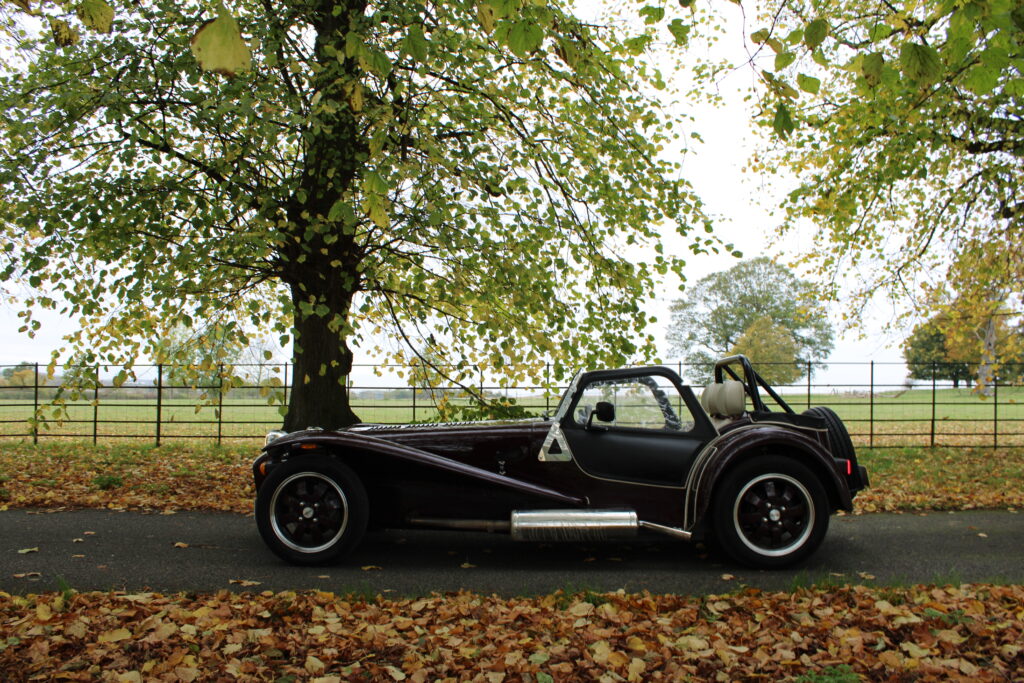
The Caterham Super Seven starts from £29,990 (£34,545 as tested). For more information, click here.
